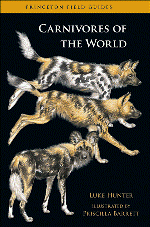Wild Tracks
On behalf of the world's wild species
Alpine Tundra Ecosystem
 Alpine tundra is located around the world on high alitutude mountains above the tree line. These windswept areas are characterised by an abundance of barren rocks or thin soils. Frequent drops in temperature to freezing followed by thaws cause the rocks to break up. In the well drained soil, the growing season is only 180 days. Temperatures drop below freezing at night.
Alpine tundra is located around the world on high alitutude mountains above the tree line. These windswept areas are characterised by an abundance of barren rocks or thin soils. Frequent drops in temperature to freezing followed by thaws cause the rocks to break up. In the well drained soil, the growing season is only 180 days. Temperatures drop below freezing at night.
There are very few wildlife species found in the Alpine Tundra, and these include:
Mammals – pikas, marmots, mountain goats, sheep, elk
Birds – ptarmigan, kea parrots & other grouselike birds
Insects – springtails, beetles, grasshoppers, butterflies
Animal Adaptations
Yellow bellied marmots and ground squirrels hibernate for eight months of the year. Pikas (who are related to rabbits) hide from the weather under rocks, storing food in piles to graze on during the cold winters. They have evolved small ears and tails to protect them from the harsh winter.
Ptarmigans manage to survive year-round, whereas the New Zealand kea parrot will move to lower ground. Kea are able to eat a leaf buds, roots, berries, fruit, seeds, blossoms, nectar and insects.
Mountain goats, elk and bears move lower further down the mountain to take advantage of the available food supply there.
Plant Adaptations
Alpine plants are generally dark in colour in order to absorb more heat and grow low to the ground. Only low growing shrubs, cushion plants, small forbs survive here, producing large bright flowers (but only every 4-5 years), as well as lush meadows of sedges and grasses. Most are slow-growing and long-lived perennials.
Ninety percent of the total structure is in the roots where nutrients and energy are stored. Some plants have a waxy coating or hairs in order to maximize heat and water.
There is a direct relationship to duration of snow cover (e.g. dense willow bushes will survive on the lee side of ridges where a deep snow cover will protect the fragile buds during the winter). A small difference in elevation will produce special plants that are adapted to these differences.

You must be logged in to post a comment.